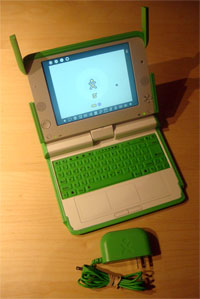See You At Silicon Prairie Social On April 28
![]() I will finally be heading west to the next Silicon Prairie Social, which will be held this Tuesday, April 28 at Arrowhead Golf Club in Wheaton, IL.
I will finally be heading west to the next Silicon Prairie Social, which will be held this Tuesday, April 28 at Arrowhead Golf Club in Wheaton, IL.
For someone who works and lives in Chicago, I rarely get out to the ‘burbs, unless I am looking to do some shopping to pay less sales tax! There are, however, quality business and tech networking events outside of the city which easily rival those within the city limits, and this is one of them. And I know I will not be alone, as many others will be trekking west as well as some event sponsors that are from Chicago. Plus I promised Tim Courtney of XNet, who organizes the event, I would make it out there one day, and now I am.
Will I see you there?
Did you enjoy reading this? You are welcome to subscribe to The Hot Iron by RSS feed or by email.
Earth Day and QR Codes
 Happy Belated Earth Day 2009! You either scrambled to do something “green” or wondered what more you can do, as it seems you are living about as green of a life as possible. I took a few moments to think about my day-to-day actions and how they impact the big picture of the world, and one word came to mind – innovation.
Happy Belated Earth Day 2009! You either scrambled to do something “green” or wondered what more you can do, as it seems you are living about as green of a life as possible. I took a few moments to think about my day-to-day actions and how they impact the big picture of the world, and one word came to mind – innovation.
The Usual Suspects
As I have previously stated here on The Hot Iron I try to be as aware as possible as to my environmental impact. I wrote what I do in a draft environmental statement for my consulting firm Dunkirk Systems, LLC though I never got any feedback and it still has not reached Dunkirk’s Web site. I also carry a Reisenthel bag with me everywhere I go. Based on these, I feel I am doing as much as I have control over to do.
Other than these actions, making a greater impact takes more work, and that’s where I feel innovation comes into play. When thinking about it more, another thing came to mind – QR codes.
What are QR Codes and Why Should I Care
QR stands for “quick response” and a QR code is a 2-dimensional barcode in the form of a cube. With 2 dimensions, it can store a larger amount of information than a traditional 1-dimensional barcode (e.g. UPC code on a product). As a result, you can store whole sentences of information, Web site URLs, email addresses and even entire contact information records. For example, the accompanying QR code in this post reads, “Happy Earth Day 2009 from The Hot Iron @ thehotiron.com !”
So how would you know that? QR codes are read by a scanner, and the most common form of scanner is a camera on a mobile device with accompanying software. Most Nokia models come preinstalled with a reader, otherwise you can get one from i-nigma among other vendors. Many devices are supported with a notable exception in Palm OS devices.
When the QR code is scanned, the information stored in the QR code is transferred to the mobile device, and you can then process it. If it displays text, you can read and save it. If it’s a URL, you can then browse to it. If an email address, you can send a message to it. If it’s contact information, you can add it to your contacts. This is basic usage of it. With more advanced software, you can do almost anything.
The following is a popular YouTube video from Japan showing how you can get nutritional information for McDonald’s menu items if you can’t see it you can view it here.
Tying The Message Together
As you may guess, QR codes are popular in Asia and in Europe but are still emerging in the US. I see QR codes as an innovative way to effectively communicate and reduce waste and costs at the same time. QR codes only require energy when they are scanned, and by the scanner themselves. They are also more eco-friendly than an RFID tag that require special manufacturing as well as are more cost effective. Here are a few examples of "green" uses that come to mind.
- Subway ads feature a QR code, eliminating the need to have tear-off postcard pads attached to them, or the need to write down information and hard-to-remember URLs.
- For that matter, all advertising should have a QR code with whatever desired call to action the advertiser desires.
- At networking events or conferences, people can wear name badges sporting QR codes with their contact information. This eliminates the need to print and carry business cards, and reduces the time to process information from those cards.
- At the Lollapalooza festival this year in Chicago, replace giving out cards on lanyards with people scanning QR codes to get free songs from iTunes, and they could be downloaded right to your device bypassing the iTunes computer software (with a more robust scanner software).
Where Earth Day continues to be popular, for many it is a day to make symbolic gestures. New, fresh and innovative ideas are needed to reinvigorate it, and QR codes fit the bill. What say you?
Did you enjoy reading this? You are welcome to subscribe to The Hot Iron by RSS feed or by email.
Your Twitter URL Should Have Your Own Domain Name
 There’s no shortage of information or advice on the use of Twitter. Allow me to add something I have not seen elsewhere – make sure the URL for your Web site in your Twitter profile has your own domain name in it.
There’s no shortage of information or advice on the use of Twitter. Allow me to add something I have not seen elsewhere – make sure the URL for your Web site in your Twitter profile has your own domain name in it.
When people customize their profile and backgrounds in Twitter, they can add a link under “more info URL” to any Web site, blog, service, etc. Some also suggest you link to a unique Twitter landing page. Whatever you link to is your choice, and this is not something I am choosing to discuss here. My recommendation is the actual URL be to a domain name you own – not to another service, but to a domain name registered by you. For my own Twitter profile, it points to my blog, The Hot Iron.
Why own your own domain name? I have talked about this at length before and the beauty of it is you can use that domain name in any number of ways. It can redirect to another URL, such as your Twitter page or LinkedIn profile. You can also customize your hosted blog at WordPress to use your own domain name. You can also customize Gmail to use it instead of gmail.com. Even more beautiful is the fact that you can switch Web hosts, blog services or even email to another provider all while keeping your same URL and email address! If you have ever moved and did not have postal mail forwarded, think of it as a permanent address.
Your own domain name further brands you. What you choose for a domain name is up to you and is a topic for another time. Just as long as you have the domain name itself, people will be able to identify and reach you with ease.
Did you enjoy reading this? You are welcome to subscribe to The Hot Iron by RSS feed or by email.
Have A Backup Email Service Account
Though I am not a firm believer in Murphys’s Law, there are times when services on the Internet seem to go down or not be available when you need them most. One of them is usually email. Even the split-second unavailability of a server can send people – and companies – into a tailspin in this world with split-second expectations.
As someone who relies more than I should on email, I have dealt with such problems for many years and going on decades. One thing I have learned with email, not to mention most aspects of business and life, is to have a backup plan. When it comes to email, it is always handy to have a backup email account with an alternative service provider than your main email accounts.
Backup email is just that – an account to use when you cannot use your main one. You don’t have to spend big money on this either – a free Gmail or Yahoo Mail account will do the trick. For myself, I have accounts with many of the free providers in the event I am not able to connect with one.
As it is a backup account, the idea is it is available if your primary account isn’t. Therefore it is not a good idea to give out the address unless absolutely necessary. In order to best utilize it, you should keep a backup copy of your contacts database so that you can easily access it if your primary account is down. Even if it is a paper printout and you have to manually type each address, it is much better than not having one. Your backup account can be also used for people to forward email messages they tried sending to your primary account but did not go through for some reason.
Backup email accounts are a key component of your overall technology backup strategy. I’ll be talking more about backups and my own strategy over time.
Did you enjoy reading this? You are welcome to subscribe to The Hot Iron by RSS feed or by email.
Selling My XO OLPC One Laptop Per Child Notebook
 In my continuous effort to declutter my life of the myriad of spare electronics laying around, not to mention earn a few dollars, I have decided to put some of these items on sale on eBay. The first is my XO OLPC One Laptop Per Child Notebook.
In my continuous effort to declutter my life of the myriad of spare electronics laying around, not to mention earn a few dollars, I have decided to put some of these items on sale on eBay. The first is my XO OLPC One Laptop Per Child Notebook.
This barely used machine was bought more for good intentions and curiosity of the hardware rather than my intent for using it as a day-to-day computer. It is designed for kids in rural areas, thus the rugged case and small keyboard. I would occasionally use it to surf the Web, but now that I have my Nokia E70 with WiFi I use that as there is no boot time required.
Here’s your chance to get your hands on an XO laptop if you are curious yourself – bidding starts at US$.01!
Did you enjoy reading this? You are welcome to subscribe to The Hot Iron by RSS feed or by email.
Page 126 of 217 pages ‹ First < 124 125 126 127 128 > Last ›

